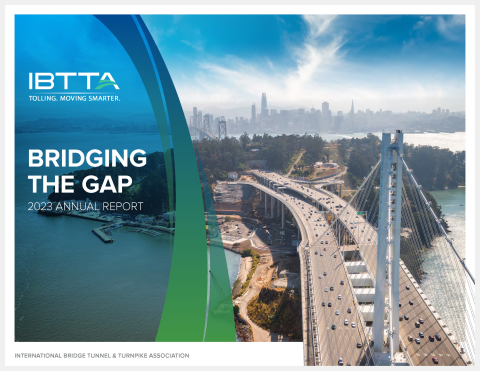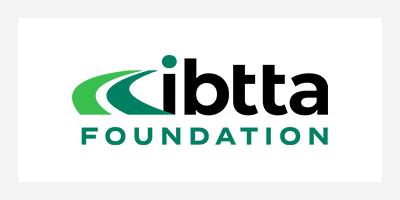- Home
- North Carolina Economic Assessment Shows Benefits of Tolling
Stories
North Carolina Economic Assessment Shows Benefits of Tolling

When the North Carolina Turnpike Authority (NCTA) first held public engagement meetings in 2010 on its proposal to toll key sections of Interstate 95, some of the most frequently asked questions had to do with the economic impact of tolling.
You might think it’s tough to get excited about economic analysis, and even tougher to package the results of a complex analysis for public consumption. But in a presentation at IBTTA’s 2013 Organization Management Workshop in Baltimore earlier this year, Jim Trogdon of the North Carolina Department of Transportation (NCDOT) outlined an approach that could be a model for any tolling agency facing similar questions.
The North Carolina Story
North Carolina’s sections of Interstate 95 were built between 1956 and 1979, and NCTA’s analysis showed that it would cost US$4.4 billion to bring them up to a modern standard. But the urgency to get the job done has a lot to do with the state’s economic story. North Carolina anticipates 50% population growth over the next 20 years, most of it concentrated in 16 counties, and transportation will be one of the keys to the state’s continuing competitiveness.
Eight of the 16 high-growth counties will need improvements along I-95 to accommodate increased traffic volume through 2030 to 2035. Relying on traditional revenue sources, it would take 70 to 100 years to come up with the funds to complete the work, compared to 20 years with tolling.
Answering the Question
In its 2012 study, NCTA calculated the economic impact of three options for the I-95 corridor: continuing the current pattern of funding, relying on new taxes or other traditional financing options to pay for the improvements, or funding the project with tolls. It based the assessment on a series of variables, including:
- Direct user impacts like travel time, vehicle operating costs, safety costs, reliability, and traffic volumes
- Business competitiveness issues, including productivity, market access, business revenue and spending, and profits
- Economic impacts, reflected in gross domestic product (GDP), employment, and incomes.
Trogdon said the design of the study advisory panel was as important as the design of the actual research. Participants included many of the stakeholders with the greatest concerns about tolling, including retailers, truckers, the state chamber of commerce and farm bureau, travel and tourism, and the No Tolls I-95 Coalition.
“We wanted to make sure every critical group was represented on the advisory council,” he explained. “From listening to them, we knew they believed that if they were not at the table, they were on the menu,” so it was essential to create a dialogue that included everyone.
The Numbers Don’t Lie
Of the three scenarios, Trogdon said tolling and mitigated tolling offered the best economic impact, without requiring a tax increase. “The corridor counties bear the greatest burden if we do nothing,” he said. “They will bear the heaviest cost if we toll, but they will also reap the largest economic benefits from the tolling and the improvements to I-95.”
- In a business as usual scenario, the eight counties would incur US$51.7 billion in increased business transportation costs and lose US$40.8 billion in gross regional product, US$44.1 billion in incomes, and 9,727 full-time jobs annually between 2014 and 2050.
- Improving roads with a congressional earmark would reduce transportation costs by US$51.9 billion and produce annual increases of US$44.2 billion in gross regional product, US$47.5 billion in incomes, and 11,633 jobs.
- Improving roads with traditional funding would produce US$77.7 billion in increased gross regional product, US$64.2 billion in incomes, and 16,844 average annual jobs statewide, including the I-95 counties. But it would require a seven-cent increase in state gas tax or a 14-cent increase in the federal tax, all dedicated solely to I-95.
- Funding the roads with tolls would reduce business transportation costs by US$45.1 billion and produce US$45.3 billion in gross regional product, US$50 billion in incomes, and 11,003 jobs annually.
Gathering the evidence is no guarantee that a legislative campaign will succeed. But without solid research as a first step, that campaign is almost certain to fail. Unless the state is prepared to raise gas prices to US$4.40 per gallon, or come up with an earmark that it can’t possibly afford, NCTA’s research points to the only viable path for a corridor where highway improvements simply can’t wait.
The North Carolina economic impact study is one of several tolling success stories on IBTTA’s Moving America Forward page. Visit us today for other success stories on transportation infrastructure financing and operations.

Joining IBTTA connects you to a global community of transportation professionals, offering unmatched opportunities for networking, knowledge-sharing, and collaborative innovation in the tolling and transportation sector.
Follow IBTTA on social media for real-time updates on transportation trends and collaborative opportunities.





